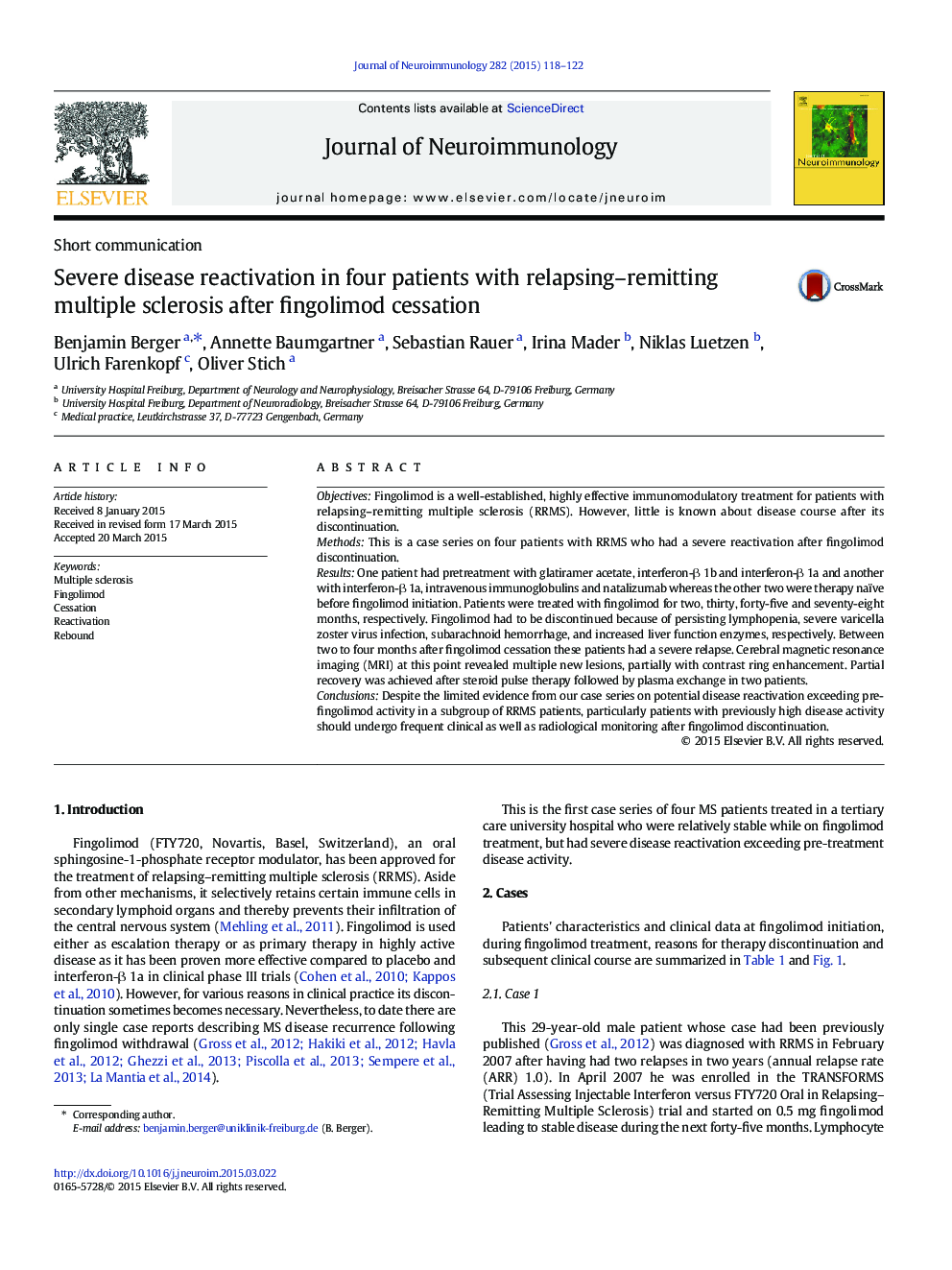| Article ID | Journal | Published Year | Pages | File Type |
|---|---|---|---|---|
| 3063945 | Journal of Neuroimmunology | 2015 | 5 Pages |
•RRMS patients are at risk for rebound after fingolimod cessation.•Reactivation occurs within 2–4 months.•Reactivation is clinically as well as radiologically.•Particularly patients with high pretreatment disease activity are at risk.•Patients should be closely monitored.
ObjectivesFingolimod is a well-established, highly effective immunomodulatory treatment for patients with relapsing–remitting multiple sclerosis (RRMS). However, little is known about disease course after its discontinuation.MethodsThis is a case series on four patients with RRMS who had a severe reactivation after fingolimod discontinuation.ResultsOne patient had pretreatment with glatiramer acetate, interferon-β 1b and interferon-β 1a and another with interferon-β 1a, intravenous immunoglobulins and natalizumab whereas the other two were therapy naïve before fingolimod initiation. Patients were treated with fingolimod for two, thirty, forty-five and seventy-eight months, respectively. Fingolimod had to be discontinued because of persisting lymphopenia, severe varicella zoster virus infection, subarachnoid hemorrhage, and increased liver function enzymes, respectively. Between two to four months after fingolimod cessation these patients had a severe relapse. Cerebral magnetic resonance imaging (MRI) at this point revealed multiple new lesions, partially with contrast ring enhancement. Partial recovery was achieved after steroid pulse therapy followed by plasma exchange in two patients.ConclusionsDespite the limited evidence from our case series on potential disease reactivation exceeding pre-fingolimod activity in a subgroup of RRMS patients, particularly patients with previously high disease activity should undergo frequent clinical as well as radiological monitoring after fingolimod discontinuation.
